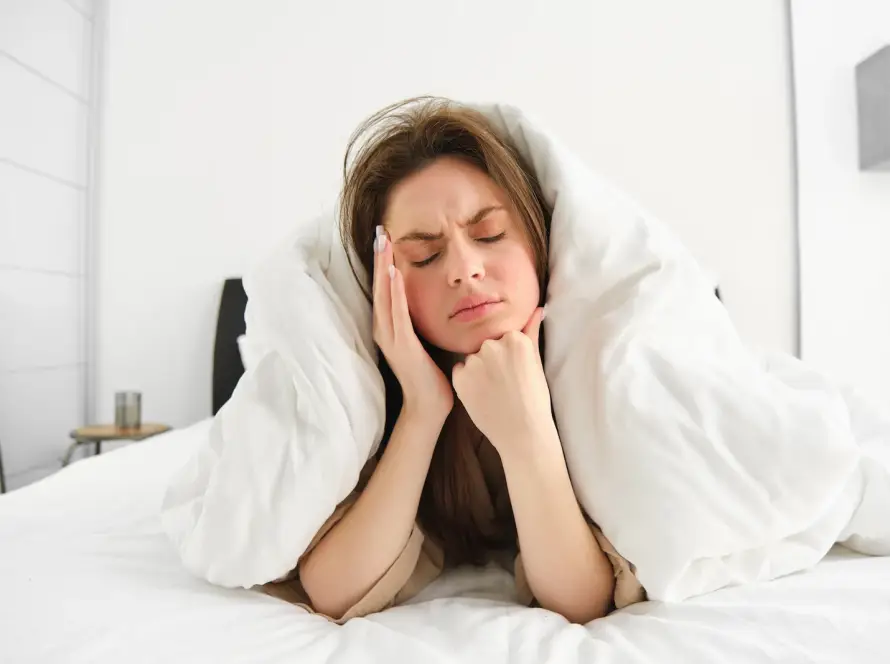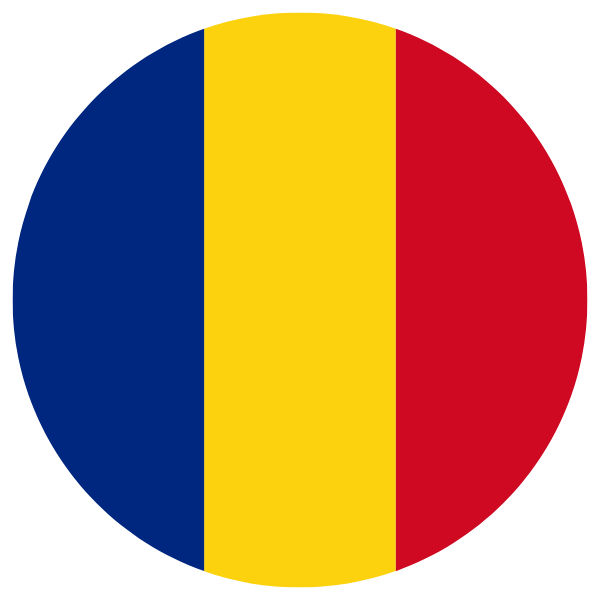Bruxism, commonly known as teeth grinding, refers to the involuntary or habitual grinding and clenching of teeth. This condition can occur during waking hours or during sleep, with the latter being classified as sleep bruxism. The phenomenon is often subconscious and can lead to various dental health issues if left untreated.
Types of Bruxism
- Awake Bruxism
- Occurs during daytime.
- Often linked to emotional triggers such as stress or anxiety.
- Sleep Bruxism
- Occurs during sleep.
- Frequently associated with sleep disorders.
Symptoms
Bruxism manifests through various symptoms, including:
- Tooth Damage:
- Wear on enamel.
- Tooth fractures or flattening.
- Jaw Disorders:
- Temporomandibular Joint (TMJ) pain.
- Stiffness in the jaw muscles.
- Other Symptoms:
- Headaches, particularly in the morning.
- Sore or sensitive teeth.
- Sleep disruption.
Causes
The exact cause of bruxism is not fully understood, but several factors contribute to it:
- Psychological Factors:
- Stress and anxiety.
- Aggression or frustration.
- Genetic Factors:
- Family history of bruxism.
- Physiological Factors:
- Sleep apnea.
- GERD (gastroesophageal reflux disease).
Diagnosis
Diagnosing bruxism usually involves:
- Dental examinations to detect signs of grinding.
- Monitoring through questionnaires or sleep studies.
- Identifying the presence of associated conditions such as sleep disorders or psychological issues.
Potential Risks
If neglected, bruxism can lead to significant dental and general health problems, including:
- Severe tooth damage and loss.
- Chronic headache and earache.
- Disruption of sleep patterns and resulting fatigue.
Understanding bruxism, its symptoms, and underlying causes is essential for effective management and prevention. This awareness enables timely intervention, minimizing potential health complications associated with teeth grinding.
What is Bruxism?
Bruxism, commonly referred to as teeth grinding, is a condition characterized by the involuntary or habitual grinding, clenching, or gnashing of teeth. This activity often occurs unconsciously, either when an individual is awake (awake bruxism) or asleep (sleep bruxism). While occasional teeth grinding may not cause significant harm, frequent and severe episodes can lead to various dental and oral complications.
Bruxism is multifaceted and can be influenced by numerous factors. It involves excessive contraction of the jaw muscles, which can exert tremendous pressure on the teeth and surrounding structures. This condition is observed in individuals of all ages, from young children to adults, and can occur at any time of the day.
Key characteristics of bruxism include:
- Teeth Grinding: Involves the continuous grinding or rubbing of teeth against each other, often producing an audible sound.
- Teeth Clenching: This involves tightening the jaw muscles forcefully without any movement, leading to persistent pressure on the teeth and temporomandibular joint (TMJ).
Bruxism is not merely a dental issue but can also affect various aspects of a person’s overall well being. Factors contributing to bruxism can be physical, psychological, or a combination of both. Some common contributors include:
- Stress and Anxiety: High levels of stress and anxiety are significant psychological triggers.
- Sleep Disorders: Disorders such as obstructive sleep apnea (OSA) are often associated with bruxism.
- Medications and Substance Use: Certain medications, especially antidepressants, stimulants, and recreational drugs, can induce or exacerbate the condition.
- Genetic Factors: A predisposition to bruxism can be inherited, with studies indicating a familial link.
Understanding the underlying causes and triggers is crucial in managing bruxism effectively. Early intervention and appropriate treatment can mitigate the potential damage associated with this condition.
Types of Bruxism
Bruxism, classified into different types, affects individuals in varied ways. Understanding these distinctions helps in identifying the appropriate treatment and management strategies.
Sleep Bruxism
Sleep bruxism occurs during sleep and is often considered a sleep related movement disorder. Those affected may not realize they are grinding their teeth until symptoms or complications arise.
- Characteristics:
- Occurs during non rapid eye movement (NREM) sleep stages.
- Often identified by partners or through dental wear patterns.
- May lead to other sleep disorders.
- Common Symptoms:
- Headaches upon waking.
- Tinnitus or ringing in the ears.
- Soreness in the jaw muscles or temporomandibular joint (TMJ).
Awake Bruxism
Awake bruxism takes place during waking hours and is often linked to stress or anxiety. Individuals may clench or grind their teeth without conscious awareness.
- Characteristics:
- Triggered by emotional factors such as stress, anger, or concentration.
- May involve repetitive, habitual clenching.
- Common Symptoms:
- Teeth sensitivity to temperature changes.
- Visible wear on the biting surfaces of teeth.
- Increased tooth mobility.
Primary and Secondary Bruxism
Bruxism is further categorized into primary and secondary forms based on its origin:
Primary Bruxism
Primary bruxism occurs independently, often without any identifiable medical cause. It may be related to psychological factors or lifestyle habits.
Secondary Bruxism
Secondary bruxism is associated with underlying medical conditions or medication usage. Conditions like Parkinson’s disease or side effects from antidepressants may contribute to its onset.
“Identification of underlying causes and risk factors plays a crucial role in tailoring treatment plans for patients.”
Daytime Bruxism
Daytime bruxism, or diurnal bruxism, may overlap with awake bruxism but is distinguished by the time of onset:
- Factors:
- Increased during periods of high concentration or stress.
- Can be monitored and managed through behavioral modification techniques.
Mixed Bruxism
Mixed bruxism refers to a combination of both sleep and awake bruxism patterns. Patients may exhibit symptoms during both sleep and waking hours, necessitating comprehensive management approaches.
- Characteristics:
- Diplomatic approach required for treatment.
- Monitoring recommended to adjust treatment as needed.
Understanding the varied types of bruxism is essential for clinicians in devising effective intervention strategies tailored to individual patient needs.
Common Symptoms of Bruxism
Bruxism manifests through various symptoms, often impacting dental health and overall well-being.
Dental and Oral Symptoms
- Tooth Wear: Noticeable wear on the teeth surfaces, including flattening, fracturing, and chipping.
- Increased Tooth Sensitivity: Enhanced sensitivity to hot, cold, or sweet foods and beverages.
- Jaw Pain or Discomfort: Persistent pain or soreness in the jaw muscles, sometimes extending to the neck or face.
- Damage to Dental Work: Breakage or loosening of existing dental appliances, such as fillings, crowns, or bridges.
- Tight Jaw Muscles: Stiffness and difficulty opening or closing the mouth, especially upon waking.
General Health Symptoms
- Headaches: Frequent headaches, particularly tension type headaches originating in the temples.
- Ear Pain or Pressure: Aching or uncomfortable pressure in the ears, often mistaken for ear infections.
- Sleep Disruptions: Difficulty sleeping due to grinding noises or discomfort from clenching.
Behavioral Symptoms
- Increased Stress or Anxiety: A strong correlation between heightened stress levels and the frequency of teeth grinding.
- Daytime Clenching: Conscious clenching or grinding of the teeth during waking hours.
- Cheek Biting: Accidental biting of the inner cheeks or tongue.
Additional Symptoms
Some individuals may also exhibit:
- TMJ (Temporomandibular Joint) Disorders: Conditions affecting the joint connecting the jaw to the skull, resulting in clicking or popping sounds when moving the jaw.
- Shoulder or Neck Pain: Extended muscle tension affecting adjacent areas, leading to discomfort in the shoulders and neck.
Identification of bruxism symptoms is crucial for early intervention and treatment to prevent further complications. Healthcare professionals can provide tailored advice and solutions to mitigate these symptoms effectively.
Causes of Bruxism
Bruxism, or teeth grinding, is a complex condition influenced by multiple factors. Here are the primary causes:
Psychological Factors
- Stress and Anxiety
- Research indicates a strong link between stress, anxiety, and bruxism.
- Individuals under significant stress often express it through nocturnal grinding.
- Emotional Factors
- Negative emotions such as anger, frustration, or tension can lead to bruxism.
- Emotional instability and psychological distress are commonly associated.
Physical Factors
- Sleep Disorders
- Sleep apnea and other sleep related issues often accompany bruxism.
- Disruptions in sleep patterns contribute significantly to the onset of teeth grinding.
- Health Conditions
- Conditions like Parkinson’s disease, Huntington’s disease, and certain types of epilepsy are associated with bruxism.
- Specific medications, especially those acting on the central nervous system, can exacerbate or induce bruxism.
- Dental Issues
- Misalignment of teeth, known as malocclusion, can lead to grinding and clenching.
- Poor dental health or missing teeth may contribute as the mouth tries to compensate.
Lifestyle Factors
- Caffeine and Alcohol Use
- High consumption of caffeine and alcohol has been linked to increased bruxism episodes.
- Stimulants disrupt sleep quality, elevating the likelihood of grinding.
- Recreational Drugs
- Substances such as methamphetamines and ecstasy are known to induce teeth grinding.
- These drugs enhance physical tension and jaw activity.
Genetic Factors
- Hereditary Tendencies
- Bruxism can run in families, suggesting a genetic predisposition.
- If parents suffer from bruxism, their children may be at higher risk.
Understanding these causes is crucial for identifying and managing bruxism effectively. Proper diagnosis often requires a multifaceted approach that considers all potential contributing factors.
Risk Factors Associated with Bruxism
Bruxism, commonly known as teeth grinding, presents various risk factors that can predispose individuals to this condition. Understanding these factors can aid in early identification and intervention.
Psychological Factors
- Stress and Anxiety: Elevated stress levels and anxiety are significant contributors. Individuals experiencing daily stress might clench their jaw unconsciously as a response mechanism.
- Personality Types: Competitive, aggressive, or hyperactive personalities are more prone to developing bruxism.
- Emotional Issues: Unresolved emotional issues, such as frustration or anger, can lead to unconscious teeth grinding, especially at night.
Lifestyle and Habits
- Substance Use: High consumption of caffeine or alcohol can increase the likelihood of bruxism. Recreational drug use, particularly stimulants, also heightens the risk.
- Smoking: Regular tobacco use has been linked to an increased risk of nocturnal teeth grinding.
- Sleep Disorders: Those with sleep disorders, such as sleep apnea, are more prone to bruxism.
Medications
Certain medications have side effects that may include teeth grinding. For example:
- Antidepressants: Selective serotonin reuptake inhibitors (SSRIs) and other antidepressants can have bruxism as a side effect.
- Stimulants: Medications used for treating attention deficit/hyperactivity disorder (ADHD), like methylphenidate or amphetamines, can elevate the risk.
Physical Factors
- Genetics: A family history of bruxism can make an individual more susceptible.
- Age: Bruxism is more common in children. However, many outgrow it as they age.
- Dental Issues: Misalignment of teeth or an abnormal bite can initiate or worsen bruxism.
Other Health Conditions
- Parkinson’s Disease: Neurological conditions like Parkinson’s can elevate the risk of bruxism.
- Gastroesophageal Reflux Disorder (GERD): The presence of GERD can trigger teeth grinding due to the discomfort caused by acid reflux.
- Coping Mechanisms: Some individuals use teeth grinding as a coping mechanism to deal with chronic pain or discomfort from other medical conditions.
Recognizing these risk factors is essential for early diagnosis and designing an effective treatment plan to manage bruxism effectively.
Diagnosing Bruxism
Accurate diagnosis of bruxism involves a multi faceted approach, incorporating clinical evaluation, patient history, and various diagnostic tools. A thorough assessment is crucial for effectively identifying the condition and determining the best course for treatment.
- Clinical Examination
- Dentists typically begin with a detailed oral examination, looking for signs of wear on the teeth, such as flattened teeth, chips, or loose teeth.
- Examination may extend to the jaw muscles to check for tenderness or hypertrophy, which can indicate chronic jaw clenching.
- Other signs such as indentations on the tongue or damage to the inside of the cheeks can be indicative of bruxism.
- Patient History
- A comprehensive history includes questioning the patient about symptoms such as jaw pain, headaches, or frequent tooth sensitivity.
- Patients may be asked about sleep patterns and stress levels, as both are significant factors in bruxism.
- Important familial tendencies toward bruxism can also be explored, given the genetic components in some cases.
- Diagnostic Tools
- X-rays and Imaging: Dental X-rays may be used to assess the extent of damage to teeth and jawbones.
- Bite Strip Analysis: This involves using a bite strip to measure the pressure exerted by the patient when biting down, identifying abnormal pressure points.
- Electromyographic (EMG) Analysis: EMG monitors muscle activity in the jaw, particularly during sleep, allowing for the detection of bruxism episodes.
- Polysomnography: For nocturnal bruxism, polysomnography, conducted in a sleep laboratory, provides comprehensive data by monitoring various body functions including muscle activity during sleep.
- Differential Diagnosis
- It is essential to differentiate bruxism from other conditions that can cause similar symptoms, such as temporomandibular joint disorders (TMJ), migraines, or even cluster headaches.
- A differential diagnosis helps tailor a more precise and effective treatment regimen.
- Behavioral Assessment
- Evaluating the patient’s psychological profile can assist in understanding triggers for bruxism, predominantly stress and anxiety levels.
- Questionnaires and psychological evaluations might be suggested by healthcare providers for a more rounded approach.
All these methods collectively aid in forming a comprehensive diagnosis, enabling healthcare providers to design a personalized treatment plan tailored to the specific needs and conditions of each patient. This multifaceted strategy ensures better management and potentially improved outcomes for those suffering from bruxism.
Impact of Bruxism on Oral Health
Bruxism, commonly known as teeth grinding, significantly affects oral health. Its impact manifests in various ways, each contributing to the deterioration of dental wellness.
- Tooth Wear:
- Continuous grinding and clenching lead to the wearing down of tooth enamel.
- This abrasion exposes the softer dentin beneath, increasing vulnerability to cavities.
- Tooth Sensitivity:
- Worn enamel causes heightened sensitivity to hot, cold, or sweet substances.
- Patients often experience discomfort during eating or drinking due to enamel erosion.
- Fractures and Chips:
- Excessive force from grinding can cause cracks or chips in teeth.
- This structural damage may necessitate complex dental procedures such as crowns or implants.
- Jaw Pain and Dysfunction:
- Chronic bruxism often results in temporomandibular joint (TMJ) disorder.
- Symptoms include jaw pain, stiffness, and difficulty in opening or closing the mouth.
- Gum Recession:
- The pressure exerted during grinding can contribute to the recession of gums.
- Gum recession exposes root surfaces, increasing susceptibility to root caries and periodontal disease.
- Headaches and Earaches:
- Muscle tension from bruxism often leads to headaches.
- Some patients report earaches due to the proximity of the TMJ to the ear canal.
- Sleep Disruption:
- Nocturnal bruxism affects sleep quality, leading to disturbances.
- Poor sleep can have cascading effects on overall health and daytime functioning.
- Dental Work Damage:
- Bruxism can damage existing dental work, such as fillings, crowns, and bridges.
- Repairing this damage incurs additional costs and time commitments.
Dentists recommend wearing night guards to mitigate some of these issues. Regular dental check ups are crucial for monitoring and managing the condition.
Untreated bruxism can lead to significant oral health problems, imposing both physical and financial burdens on the affected individuals. Understanding these impacts is essential for timely intervention and effective management strategies.
Long term Consequences of Untreated Bruxism
Untreated bruxism can have significant impacts on a person’s oral health, general well being, and quality of life. Persistent grinding and clenching of teeth exert excessive force on dental structures, leading to a multitude of issues.
Dental Damage
- Tooth Wear: Continuous grinding can strip away the enamel, causing teeth to become flattened, fractured, or chipped.
- Tooth Sensitivity: As enamel erodes, the underlying dentin is exposed, which often leads to heightened sensitivity to hot, cold, or sweet stimuli.
- Tooth Loss: In severe cases, the wear from bruxism can damage the pulp within the teeth, potentially leading to tooth loss.
Jaw Disorders
- Temporomandibular Joint Disorders (TMD): The constant strain on the jaw muscles can result in or exacerbate TMD. Symptoms may include jaw pain, clicking or popping sounds, and difficulty in moving the jaw.
- Muscle Fatigue: Prolonged clenching can cause the jaw and facial muscles to become sore and fatigued, leading to chronic discomfort.
Headaches and Earaches
- Tension Headaches: Bruxism often leads to tension headaches due to the continuous strain placed on the facial muscles.
- Earaches: Pain can radiate from the jaw to the ear area, often mistaken for ear infections when the source is muscle tension from bruxism.
Aesthetic Concerns
- Altered Facial Structure: Continuous muscle exertion may lead to hypertrophy of the masseter muscle, giving the lower face a more square appearance.
- Worn Teeth: The aesthetic appeal of one’s smile might be compromised due to visible wear and tear on the teeth.
Sleep Disruption
- Sleep Disorders: Nighttime bruxism can interrupt sleep patterns, affecting the quality of rest. This might contribute to fatigue and decreased daytime performance.
- Partner Disturbance: The noise caused by teeth grinding can also disturb sleep for bed partners, leading to additional relational stress.
Psychological Impact
- Stress and Anxiety Correlation: Chronic pain and discomfort from bruxism can exacerbate psychological conditions such as stress and anxiety, often creating a vicious cycle where anxiety leads to more grinding.
- Quality of Life: Ongoing pain and dental problems can significantly reduce quality of life, affecting eating, speaking, and social interactions.
Secondary Health Issues
- Gastrointestinal Problems: Poor oral health and tooth loss might lead to dietary changes that could impact nutritional intake, potentially causing gastrointestinal issues.
- Overall Health Implications: Untreated bruxism can sometimes correlate with other health problems like hypertension, exerting additional strain on one’s overall health.
Addressing bruxism promptly can mitigate many of these long term consequences and enhance overall health and well being.
Managing and Treating Bruxism
Management and treatment of bruxism involve various approaches tailored to individual cases. Key strategies include dental interventions, behavioral therapies, and medical treatments.
Dental Interventions
Dentists often prescribe mouthguards or dental splints to protect teeth from grinding damage. Customized devices, crafted from impressions of the patient’s teeth, offer optimal fit and function. Over the counter options are available, but they may not provide the same level of comfort and protection.
- Mouthguards: Soft or hard materials safeguard teeth during sleep.
- Dental Splints: More rigid, offering additional support and alignment.
- Orthodontic Adjustments: Realignment of teeth to minimize grinding.
Behavioral Therapies
Behavioral approaches focus on reducing stress, managing anxiety, and promoting healthy habits.
- Stress Management: Techniques like meditation, yoga, and counseling can reduce stress-related bruxism.
- Biofeedback: Uses electronic monitoring to teach awareness and control over jaw movements.
- Cognitive Behavioral Therapy (CBT): Targets underlying psychological issues contributing to bruxism.
Medical Treatments
For severe cases, medical interventions may be necessary. Medications can alleviate symptoms of bruxism and its underlying causes.
- Muscle Relaxants: Prescribed for short term relief before bedtime.
- Botox Injections: Reduce muscle activity in the jaw, decreasing grinding intensity.
- Antidepressants: When bruxism is linked to anxiety or depression, medications address these conditions.
Lifestyle and Home Remedies
Simple lifestyle changes can also mitigate bruxism.
- Avoid Stimulants: Limiting caffeine and alcohol intake, especially before bed.
- Exercise: Regular physical activity reduces stress.
- Sleep Hygiene: Establishing a consistent sleep routine encourages restful sleep.
Regular Monitoring and Follow ups
Regular dental checkups are crucial for monitoring progress and adjusting treatments.
Dentists and healthcare providers should collaborate to ensure comprehensive care, addressing both the dental and psychological aspects of bruxism.
By integrating these diverse strategies, effective management and treatment of bruxism can significantly enhance patients’ quality of life.
Preventative Measures for Bruxism
Implementing effective preventative measures can mitigate the onset and impact of bruxism.
Stress Management
Reducing stress levels is crucial. Practitioners should recommend:
- Relaxation Techniques: Practices such as yoga, meditation, and deep breathing exercises.
- Counseling: Cognitive-behavioral therapy (CBT) and other psychological interventions.
Dental Interventions
Preventative dental measures may include:
- Mouthguards: Custom-fitted night guards can prevent tooth damage by creating a barrier.
- Dental Correction: Adjusting the alignment of teeth to relieve bite-related issues.
Lifestyle Changes
Lifestyle adjustments can play a significant role:
- Avoid Stimulants: Limiting intake of caffeine and alcohol, especially in the evening.
- Establishing a Bedtime Routine: Creating a calm sleeping environment.
Awareness and Behavior Modification
Increasing patient awareness of their condition can be effective:
- Biofeedback: Techniques aimed at controlling muscle activity.
- Conscious Habit Reversal: Advising patients to keep lips closed with teeth apart when not eating.
Examining and adopting these measures can help alleviate bruxism and minimize potential damage to oral health.
Lifestyle Changes to Alleviate Bruxism
Stress Management
Managing stress stands as one of the most effective methods in alleviating bruxism symptoms. Individuals can adopt various stress management techniques:
- Regular Exercise: Engaging in physical activities such as walking, running, or yoga can reduce stress levels significantly.
- Meditation and Mindfulness: Practices like meditation, deep-breathing exercises, and mindfulness can help calm the mind and reduce the tension that leads to teeth grinding.
- Hobbies and Leisure Activities: Participating in hobbies and leisure activities can provide a healthy distraction from stressors, reducing the likelihood of habitual grinding.
Sleep Hygiene
Improving sleep hygiene can also alleviate bruxism. Key factors include:
- Consistent Sleep Schedule: Establishing a regular sleep schedule ensures adequate rest and minimizes nocturnal bruxism.
- Comfortable Sleep Environment: Creating a calm and comfortable sleep environment helps in achieving uninterrupted sleep, reducing the risk of teeth grinding.
- Limiting Stimulants: Avoiding caffeine, nicotine, and other stimulants before bedtime can prevent sleep disruptions that may contribute to bruxism.
Dietary Adjustments
Dietary adjustments can play a crucial role in reducing bruxism:
- Avoiding Hard Foods: Hard foods like nuts and ice can exacerbate bruxism symptoms by putting extra pressure on the jaw.
- Limiting Sugar and Acidity: Reducing consumption of sugary and acidic foods can decrease the likelihood of dental discomfort associated with bruxism.
- Hydration: Maintaining proper hydration helps in keeping muscles relaxed, thereby reducing the risk of grinding.
Behavioral Techniques
Certain behavioral techniques can help individuals become more aware of their grinding habits and take preventive actions:
- Awareness Training: Using tools like biofeedback can help individuals recognize and control jaw clenching and teeth grinding.
- Jaw Exercises: Practicing specific jaw exercises can strengthen the muscles and provide relief from the discomfort associated with bruxism.
- Facial Relaxation Techniques: Techniques such as massaging facial muscles can aid in alleviating the tension that contributes to teeth grinding.
Professional Interventions
In some cases, professional interventions may be necessary:
- Dental Guards: Custom-made dental guards protect teeth from the wear and tear caused by grinding.
- Therapy: Cognitive-behavioral therapy (CBT) can address the psychological factors contributing to bruxism.
- Medication: In severe instances, physicians may prescribe muscle relaxants or other medications to alleviate symptoms.
By adopting these lifestyle changes, individuals can drastically reduce the impact of bruxism on their daily lives.
When to Consult a Healthcare Professional
Recognizing when to seek professional help for bruxism is crucial for effective management and prevention of further complications. Consulting a healthcare professional is essential under the following circumstances:
- Persisting Symptoms: If symptoms of teeth grinding, such as jaw pain, headaches, or tooth sensitivity, persist over a prolonged period despite self-care measures.
- Severe Dental Damage: When noticeable damage to the teeth, such as chipping, flattening, or loosened teeth, is observed, indicating advanced stages of bruxism.
- Disturbed Sleep Patterns: If bruxism is causing sleep disturbances, for both the individual and their partner, and leading to additional health issues such as fatigue and poor concentration.
- Frequent Jaw Pain: Recurrent episodes of jaw pain, tightness in the facial muscles, or earaches that hinder daily activities and quality of life.
- Ineffectiveness of Over-the-counter Solutions: If non-prescription methods, such as mouthguards and relaxation techniques, fail to reduce the symptoms significantly.
- Presence of Concomitant Disorders: If there are existing conditions such as sleep apnea, anxiety, or depression that may be contributing to or exacerbating the bruxism.
What to Expect During a Consultation
During a consultation, the healthcare professional will:
- Medical History Review: Evaluate the patient’s medical history, including any existing conditions, medication use, and lifestyle factors.
- Physical Examination: Perform a thorough dental examination to check for signs of bruxism, including tooth wear, jaw tenderness, and abnormal bite patterns.
- Diagnostic Tests: May recommend diagnostic tests such as X-rays, bite analysis, or polysomnography (sleep studies) to determine the severity of bruxism and identify any underlying causes.
Potential Treatment Options
Based on the assessment, the healthcare professional may suggest a variety of treatment options, including:
- Behavioral Therapies: Techniques such as stress management, biofeedback, and cognitive behavioral therapy (CBT).
- Dental Interventions: Custom-fitted mouthguards or splints to protect teeth during sleep.
- Medications: Short-term use of muscle relaxants, anti-anxiety drugs, or medications to address underlying conditions.
- Lifestyle Modifications: Recommendations for lifestyle changes, including reducing caffeine and alcohol intake, establishing a regular sleep schedule, and practicing good oral hygiene.
Seeking timely consultation ensures comprehensive care and mitigates the risk of long-term damage from bruxism.
Frequently Asked Questions about Bruxism
What is Bruxism?
Bruxism is the medical term for the grinding, gnashing, or clenching of teeth. It can occur unconsciously while awake (awake bruxism) or during sleep (sleep bruxism).
What causes Bruxism?
Bruxism can be triggered by various factors, including:
- Stress and Anxiety: Emotional stress or anxiety is a common trigger, especially for awake bruxism.
- Sleep Disorders: Conditions like sleep apnea can increase the likelihood of sleep bruxism.
- Medications: Certain antidepressants and other medications can induce bruxism.
- Lifestyle Factors: High caffeine or alcohol consumption may exacerbate teeth grinding.
What are the symptoms of Bruxism?
Common symptoms include:
- Jaw Pain: Discomfort or pain in the jaw, especially upon waking.
- Headaches: Frequent morning headaches.
- Dental Damage: Worn-down teeth, enamel loss, or broken dental work.
- Ear Pain: Pain or pressure in the ear due to jaw tension.
- Sleep Disruption: Disturbances in sleep quality for both the person grinding their teeth and their partner.
How is Bruxism diagnosed?
Diagnosis typically involves:
- Dental Examination: A dentist may notice wear patterns on teeth indicative of grinding.
- Patient History: Discussing symptoms and potential triggers with a healthcare provider.
- Sleep Studies: In cases of sleep bruxism, a sleep study may be conducted to observe and confirm the behavior.
What treatments are available for Bruxism?
Treatments vary but commonly include:
- Behavioral Therapies: Stress management, relaxation techniques, and cognitive behavioral therapy.
- Dental Guards: Mouthguards or splints to protect the teeth during sleep.
- Medications: Muscle relaxants or Botox injections to reduce jaw tension.
- Lifestyle Changes: Reducing stress, limiting caffeine and alcohol intake, and improving sleep hygiene.
Can Bruxism cause long-term damage?
Yes, bruxism can lead to:
- Dental Issues: Severe tooth damage, such as fractures or enamel wear.
- Temporomandibular Joint Disorders: TMJ problems due to chronic jaw clenching.
- Chronic Pain: Persistent headaches and jaw pain.
Is bruxism common in children?
Yes, bruxism is relatively common in children and often occurs during periods of growth and development. Most children outgrow the condition without long-term effects.
When should one see a doctor for Bruxism?
A healthcare provider should be consulted if:
- Symptoms are severe: Persistent pain or significant dental damage.
- Sleep disruption occurs: Sleep quality is affected consistently.
- Unexplained symptoms: Symptoms do not improve with basic self-care measures.
Conclusion: Understanding and Addressing Bruxism
Bruxism, commonly referred to as teeth grinding, encompasses both daytime and nighttime occurrences. The practice often leads to various dental complications, including tooth wear, jaw disorders, and headaches. Understanding the symptoms and causes is essential for effective management. Awareness and early detection can aid in mitigating potential long-term effects.
Symptoms
- Tooth wear and sensitivity
- Jaw pain and tightness
- Headaches and earaches
- Facial discomfort
- Disruptions in sleep
Causes
- Psychological factors like stress and anxiety
- Abnormal alignment of teeth
- Sleep disorders such as sleep apnea
- Lifestyle factors, including caffeine and alcohol consumption
- Genetic predisposition
Addressing Bruxism
- Dental Approaches
- Custom-made mouthguards to protect teeth
- Corrective dental procedures to fix misalignment
- Behavioral Strategies
- Stress management techniques, such as meditation
- Avoidance of stimulants like alcohol and caffeine
- Medical Interventions
- Medication to manage underlying conditions
- Muscle relaxants for severe cases
- Lifestyle Adjustments
- Regular exercise to reduce stress levels
- Establishing a consistent sleep routine
Recognition of bruxism’s multifaceted nature allows for a comprehensive approach to treatment. Dental professionals play a significant role in diagnosing and providing appropriate interventions. It is crucial to address both physical and psychological factors for effective management. Early intervention can prevent severe dental damage and improve the overall quality of life.















